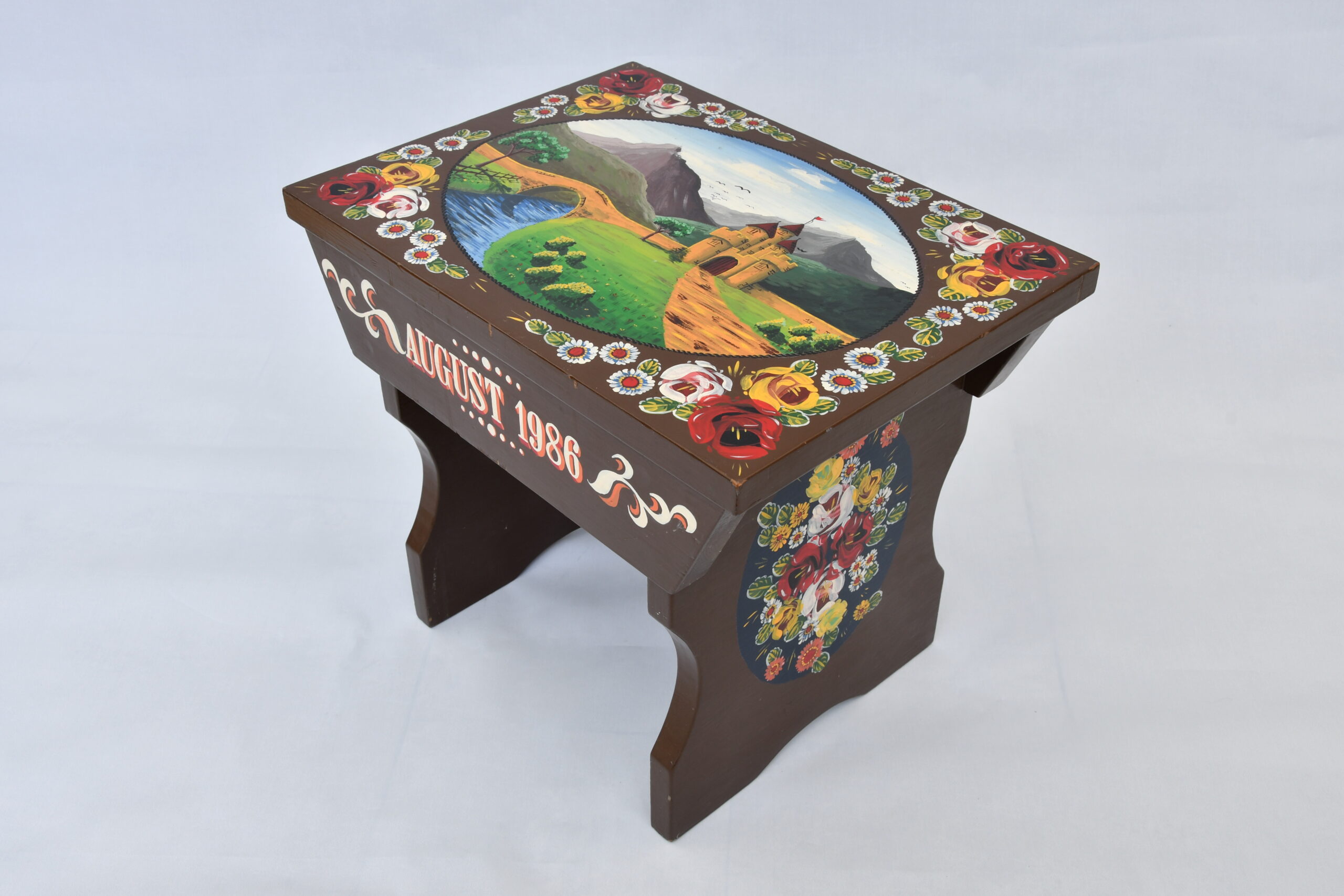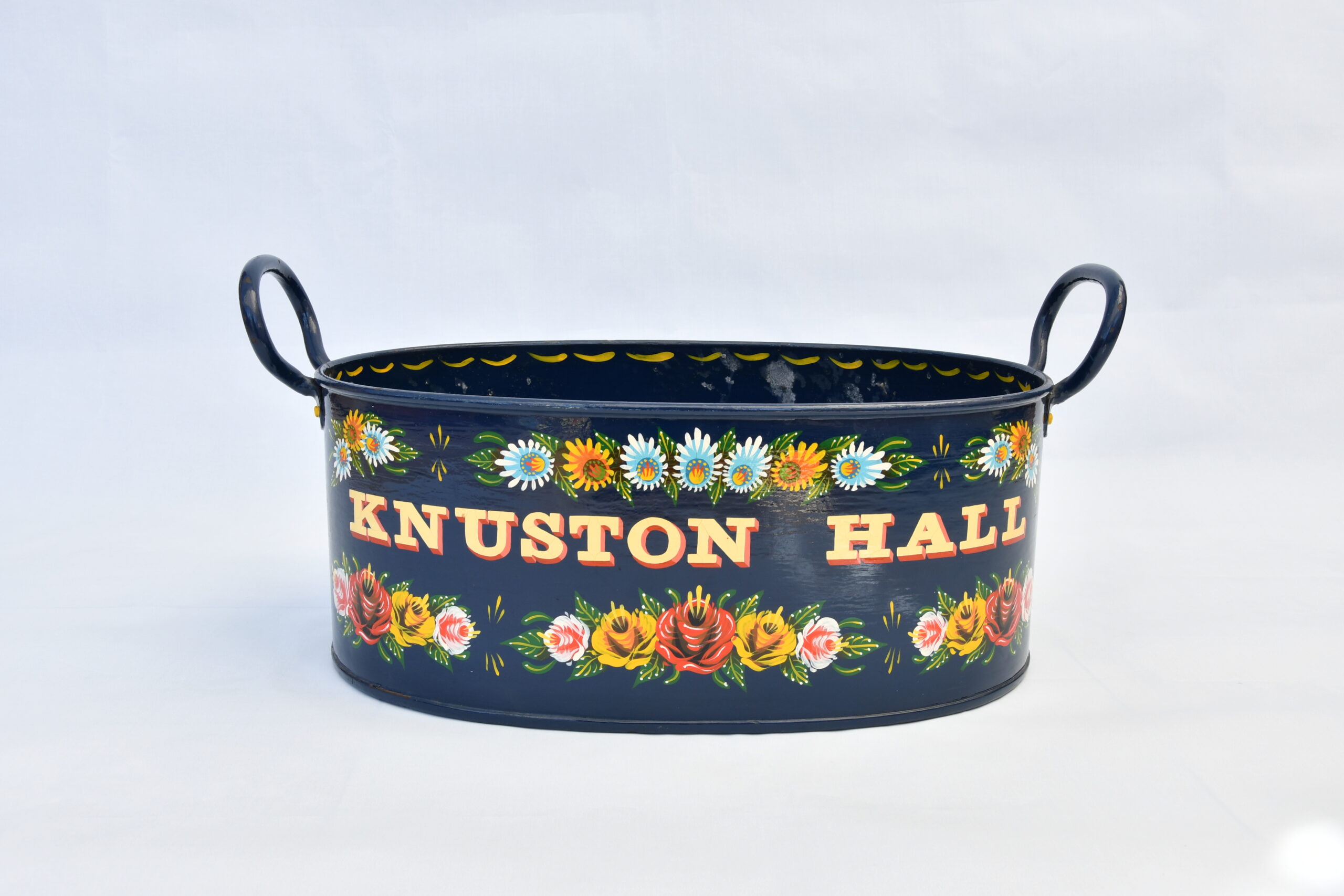50 Years of Canal Art
It is 50 years since I became interested in Canal Art so decided to write an article about my interest, something I had been meaning to do for sometime. What follows is the text that was printed in the April 2020 edition of the Waterways World magazine. For more information about Waterways World please visit their website.
In the summer of 1969 I joined my Uncle’s family for our first waterways holiday on the Rivers Avon and Severn. At the age of twelve a whole new world of inland waterways, narrow boats and canal art opened up to me. I fell in love with the brightly coloured decoration of roses & castles which subsequently proved to give me endless hours of enjoyment. Our first truly canal holiday followed two years later, finding us on the Stourport Ring from Tardebigge in a converted coal boat. It still had its original boatman’s cabin and we had to make up the coal fire for heating, each day. The trip included the Worcester & Birmingham Canal, River Severn, Staffordshire & Worcestershire Canal and old main line through Wolverhampton to Birmingham. In the early 1970s, before Waterways World and the sudden influx of a new boaters, the ring could be completed in a week. This was despite the reverse gear breaking and the boat being boarded by a group of teenagers just outside Wolverhampton. They started off with a ‘big and tough’ attitude but the discovery that we had no reverse gear, changed them into whimpering kids who thought they’d be carried away to Birmingham! It was the height of the summer and the towpaths were completely overgrown. A pick-nick on the towpath found us getting almost lost in the long grass but it did not matter as there was little chance of anyone else coming along. Boats were few and far between. Gas Street Basin was the only busy place although hidden away from the City Centre through a small back gate. Gas Street Basin at that time was still in a world of its own where the scene of painted boats felt like travelling back into the past. I was so taken by the colours of the boats that I wanted to learn about the decoration.
First Canal Art Purchase
Our next canal trip took us to the Llangollen Canal, followed by one to Stratford-upon-Avon where there was a boat selling traditionally painted items. By now I was in my mid-teens, had joined the Inland Waterways Association and saved enough money to purchase one of the larger water cans. I spent some time choosing, what I thought was the best, from a large selection. After my purchase I became determined to find a way of learning how to paint the traditional Roses & Castles. I found a book for sale, at a well-known news agents, on Liverpool Street Station called Canal Boats and Boaters(1973) by D. J. Smith. The book contained a chapter about canal art, which was a start but in the meantime I made a traditional cabin stool and decorating it with transfers. The transfers looked fairly realistic from a distance until you kept seeing the exact same thing around the canals!
Water Can bought at Stratford-on-Avon

First Canal Art Course
The Uncle who introduced me to canals, introduced me to Waterways World by buying me the second edition. In those days, it was only going to be published once a quarter so I managed to purchase the first edition as I thought three months was a long wait for the next edition. I bought every edition after that and in a 1986 edition there was an advert for a week’s residential course in canal art at Abergavenny. I booked straight away but was rather apprehensive about what I would fine as I was one of those who had been put of art at school although I liked the idea of painting. Humbrol paint was recommended for the course as it was readily available and not too expensive. In those days the basic Humbrol colours could be bought in half pint tins which a local hardware store ordered them especially for me. When I arrived my initial fears soon evaporated as course was made up of people from a variety of backgrounds, some with a direct link to canals and others like myself, who just loved the bright colours and patterns but we all wanted to learn and we were not disappointed. The course tutor organised a well structed week which included roses, daises two castles pictures, scroll work an evening talk from a local British Waterways representative and a trip out. As an aid, she had produced a variety of work sheets on the flower patterns, lettering, colour combinations but not the castle pictures. She said that was rather difficult to put down in a note and had not been able to find any published material about castle pictures at the time. Narrow Boat Painting by Tony Lewery was the only contemporary book on the subject and that seemed to be more about the history than detailed advice on the painting. Painting Roses & Castles by Anne Young had not yet been published.
Looking back to that first weeks tuition I feel fortunate that our tutor had a high respect for the traditional designs and techniques but had no connection to our waterways. This meant that she was able to bring new ideas when we met up each year for the following six years for either another weeks course or a weekend one. She saw roses and castles as a ‘Folk Art’ which could be developed like Fair Ground Art that had keep pace with contemporary themes. This thinking has subsequently come true as reflected in the many different ways that people now decorate their boats.
During that first week, as well as the paint, we were told to bring dark card to practise on and one or two items to paint. I made up another cabin stool and a pair of simulated cabin doors. I had trained as a Cabinet Marker at the London College of Furniture so made the doors from oak. I had not yet learned about traditional narrow boat construction methods or scumbling. That was covered on one of the follow up courses using old beer, powder paint and sugar. During the first week we were taken through numerous painting exercises in easy to follow stages, which gave time to write notes. I paid special attention to my notes on painting a castle picture as there were none provided. After the course finished I re-wrote my castle notes on a BBC B Computer as I had learned that re-writing notes helped the information sink in as well as providing me with a better copy. I was so pleased with the notes that I sent a copy to the Tutor who asked if she could use them on her subsequent courses. I was delighted by that and some years later, when using the notes on one of my own courses, I was accused of stealing them by one of my class. The person in question had also started with the same tutor where she had been given the notes written by me. It took some persuasion on my part to explain that I had written them in the first place
First attempt a painting a complete item

Becoming hooked on Canal Art
I became hooked on canal art and found myself doing a little painting each week and selling at craft shows to fund my new hobby. When our tutor moved on from canal art to fine art she put my name forward to replace her at Knuston Hall Residential College in Northamptonshire where she had be going every six months. I was delighted to be put forward and accepted. By that time I had become a fully time Design & Technology teacher and already taught canal art as an evening class in Essex. The Knuston Hall courses have now been running every six months for over thirty years and have evolved into a variety of formates. This was partly thanks to my evening class who wanted more that just a weekend of intensive painting. Some of the weekend courses evolved into three and five day ones. Knuston Hall offers full board with three cooked meals a day, leaving plenty of time for painting without worrying about getting a meal ready or clearing away. Knuston Hall also now offers one day introductory courses where participants develop their skills in painting the flower pattern on one day and a castle picture on another. Weekend and longer courses give participants the opportunity to try out ideas on their own larger items and it’s not unknown for bits of canal boat to turn up. (2023 Knuston Hall College has closed and is now being sold)
Fish Kettle painted for Knuston Hall College

Bringing the story up to date (April 2020)
During the time since I took up canal art I have continued to develop my skills and a variety of designs for my own interest and because people coming back time and again want something new. I am constantly having to explore new variations on traditional patterns and come up with new designs but always trying to preserve the techniques of simple brush strokes to build up the various patterns. New designs means new notes for the participants and this has developed into a complete folder of notes. These have included the use of different colours, as there’s a much greater variety available today, than the basic primary and secondary ones used in past. These new colours have been made possible by the development of paint technology. We no longer have to mix our own paints from scratch, with oils and pigments before we start. There are also new traditions developing in canal art as the boats are being built using a greater variety of materials that are finished using different background colour and finishes.
We are now in a new era where the last boatman born on the working boats are passing and narrow boating is mostly about leisure. Leisure boating could be around for a lot longer than commercial carrying so there are bound to be new traditions developing. Decoration that is sprayed on or made using vinyl stickers. Who is to say there is anything wrong with that, we are just using the materials of our time, but it’s always good to preserve the best of the past as we move forward.
For details of Knuston Hall please visit www.knustonhall.org.uk

